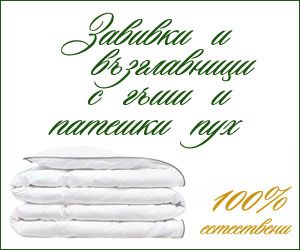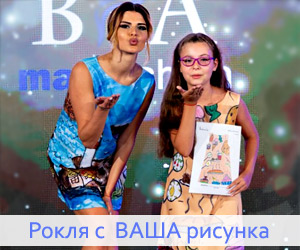NINO CERRUTI - eternal revelation of elegance
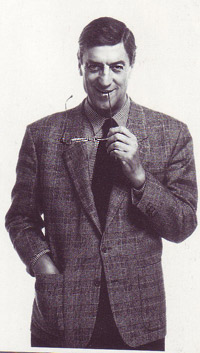 Nino Cerruti was born on September 25, 1930 in Biella, Italy. At the age of 20, Nino Cerruti became the head of the family textile business founded in 1881. The grandson of one of the three Cerruti brothers, he had to leave the university in order to take up the management of the family company. He started working in the beginning of the 1960s and revolutionized textile production in Biella. In 1957 he created Hitman - a Milan-based company for menswear with which the young designer founded the first luxury prêt-a-porter for men, Cerruti 1881. In 1967, Cerruti opened a boutique in Paris and launched women's wear for the first time in 1976. After that he launched another two lines - CERRUTI Sport and CERRUTI Jeans. In 1978 he premiered the Nino Cerruti Pour Homme fragrance, to be followed by others on the market - Nino Cerruti Fair Play (1984), Nino Cerruti Pour Femme (1987), 1881 (1988), as well as Cerruti 1881 Pour Homme, Cerruti 1881 Pour Femme and others. Even in 1992 the company’s turnover reached 455 million dollars, with sales being distributed as follows: men's prêt-a-porter - 32 %; women's prêt-a-porter - 15 %; fabrics - 17 %; perfumes - 10 %. The fashion house created the costumes for some of the most popular movie heroes and its annual output amounts to 330,000 outfits! Nino Cerruti sold his fashion house in 2000 but he did not lose contact with it. A frequent visitor, he continued to give wise advice to his heirs. Even today Cerruti can be seen at the legendary textile factory in Biella where he feels at home. He is the bearer of many prestigious awards, including Cutty Sark (1982; 1988), Pitti Uomo (1986) among others.
Nino Cerruti was born on September 25, 1930 in Biella, Italy. At the age of 20, Nino Cerruti became the head of the family textile business founded in 1881. The grandson of one of the three Cerruti brothers, he had to leave the university in order to take up the management of the family company. He started working in the beginning of the 1960s and revolutionized textile production in Biella. In 1957 he created Hitman - a Milan-based company for menswear with which the young designer founded the first luxury prêt-a-porter for men, Cerruti 1881. In 1967, Cerruti opened a boutique in Paris and launched women's wear for the first time in 1976. After that he launched another two lines - CERRUTI Sport and CERRUTI Jeans. In 1978 he premiered the Nino Cerruti Pour Homme fragrance, to be followed by others on the market - Nino Cerruti Fair Play (1984), Nino Cerruti Pour Femme (1987), 1881 (1988), as well as Cerruti 1881 Pour Homme, Cerruti 1881 Pour Femme and others. Even in 1992 the company’s turnover reached 455 million dollars, with sales being distributed as follows: men's prêt-a-porter - 32 %; women's prêt-a-porter - 15 %; fabrics - 17 %; perfumes - 10 %. The fashion house created the costumes for some of the most popular movie heroes and its annual output amounts to 330,000 outfits! Nino Cerruti sold his fashion house in 2000 but he did not lose contact with it. A frequent visitor, he continued to give wise advice to his heirs. Even today Cerruti can be seen at the legendary textile factory in Biella where he feels at home. He is the bearer of many prestigious awards, including Cutty Sark (1982; 1988), Pitti Uomo (1986) among others.
"Only with something unusual you can make a breakthrough and succeed!", these far-sighted words of Nino Cerruti actually sum up the existential and professional philosophy of people today - particularly of young people with the ambition to show themselves in the best possible light and give something of value to this world. Cerruti is one of the great symbols of quality and style in fashion of our time. His name is frequently cited as an example of beneficial coexistence of business and art. But do we know his art well? What is his contribution to men's and women's style of dressing? To what is the incredible popularity of the movie costumes in Hollywood due?
Different ideas, findings and hits lie at the basis of the success of the various designers. One cannot explain the head-spinning success of Nino Cerruti if one does not bear at least two circumstances in mind - his affinity to original and high-quality textiles, on the one hand, and his work for the cinema and some of the most popular film productions - on the other. Even at the dawn of his professional career Cerruti aimed his interest at new textiles without, naturally, belittling the traditions and techniques that have proven their advantages in time. He modernized and renewed classical materials with due respect for traditional methods. These were precisely the cloths that inspired Cerruti for years ahead in his ambition to create some of the most appropriate clothes for prêt-a-porter. Being an acknowledged innovator the designer created many new threads and achieved the production of exceptionally fine and high-quality textiles. He introduced a new, unknown until then technology of the so-called "vertical operations" in the factories, thanks to which clothes are produced simultaneously with their designing. A large number of his biographers pay attention to the fact that he knows in detail textile production and the production process. In that way he not only controlled perfect factory make but also showed himself as an innovative rationalizer and even inventor.
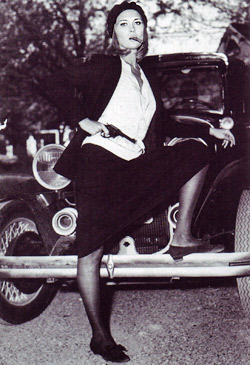 ITALIAN STYLE DETHRONES BRITISH FASHION
ITALIAN STYLE DETHRONES BRITISH FASHION
At his first review in Paris in 1967 Nino Cerruti presented grand futuristic trends described in the fashion press as "1967 is the year in which Italian style dethroned British fashion". Cerruti's new silhouette lent a carefree and manly air to all those who preferred this style, destined to fame and success. At a time when business travel began to increase the change to rather more informal elegance was brought in by the Cerruti style which opened the way to a new era in men's wear.
Just as in his men's collections, the suggestions for ladies mainly feature classical forms, high-quality materials and the sense of modernity. Decades ago the designer sensed unisex and androgenic aesthetics, beginning to blend clothes for men and for women. Which fashion is the most durable? And where does the essence of beauty in clothes lie? Nino Cerruti's answer is laconic as it is impeccable, just as the style of his models: "The essence of beauty in clothing is that it should never be out of fashion. The sign of true style is rediscovering individuality - a rediscovery that can never remain in the past."
CERRUTI AND CINEMA
"While I have ideas I'll work in Hollywood!" is the frequent refrain of the designer. Cerruti's incredible pieces for present-day cinema have made him famous all over the world. Peter Coyote and Harrison Ford, Anthony Hopkins and Al Pacino are among those who favour Cerruti 1881 not only for roles on the screen but also in their personal life. With what other names is that of this movie star confidant linked? In American film industry the name of Nino Cerruti is associated with Oscar winners whose impeccable look has become part of Hollywood's history. Nino Cerruti marked the style of legendary women of the screen, beginning with Kathleen Turner and ending with Sharon Stone. Even in 1958 the designer invited Anita Ekberg, already popular thanks to her performance in Fellini's La dolce vita, to participate in his advertisement campaign for a new shade in men's fashion. Teri Agins described Cerruti's concept in detail - to impose the new "battalion" shade - greenish and/or petroleum blue, to which end he convinced Lancia to paint 40 Americas in this shade. A fleet of blue Lancias paraded across Rome, each one of them "fitted" with a beauty, also in a blue dress. Anita Ekberg herself took part in Cerruti's men's wear review at the Excelsior, wearing petroleum blue and perched on the roof of a Lancia, with champagne in hand. Agins recalls that Cerruti was very pleased with this strange, unusual and extremely successful way of launching the new shade. On this occasion he used to say: "That is how we launched the new shade. It was very crazy. Very Dolce Vita..."
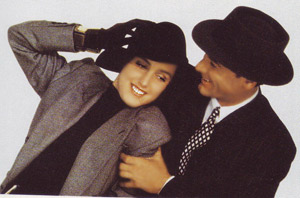 As an unsurpassed designer Cerruti also enjoyed a powerful influence of leading stylist for Hollywood men. Philippe Noiret, Michael Douglas, Clint Eastwood and Jack Nicholson wear Nino Cerruti's handmade suits. The true talent of the designer, however, becomes evident mostly in the films with his costumes. Constantly invited by creators of European and Hollywood movies Cerruti, whose name could have been read on the scripts of dozens a films a year, agreed to work for just five or six of them. Selected among the most remarkable movie designers like Bernie Pollack, Erica Phillips, Gloria Gresham and Marilyn Vance, he became established as the movie designer of fashion industry.
As an unsurpassed designer Cerruti also enjoyed a powerful influence of leading stylist for Hollywood men. Philippe Noiret, Michael Douglas, Clint Eastwood and Jack Nicholson wear Nino Cerruti's handmade suits. The true talent of the designer, however, becomes evident mostly in the films with his costumes. Constantly invited by creators of European and Hollywood movies Cerruti, whose name could have been read on the scripts of dozens a films a year, agreed to work for just five or six of them. Selected among the most remarkable movie designers like Bernie Pollack, Erica Phillips, Gloria Gresham and Marilyn Vance, he became established as the movie designer of fashion industry.
A Hollywood star? Quite the contrary. The personal passion of Nino Cerruti for cinema and fashion still isn’t everything that generates the admiration of movie managers and film stars. Hollywood costume designers know that a whole team of professionals, working for him in his Paris studio and the factory in Italy, stands behind Cerruti’s talent. His entry into the universe of cinema was gradual and unequivocal. Initially he won serious clients in the circles of film stars who bought and ordered clothes for everyday wear. These include aces of the screen like Orson Welles, Faye Dunaway, Catherine Deneuve and Jean-Paul Belmondo, among others. The moment, however, came when the designer also began to make the costumes for their roles. The elegant and memorable look of Alain Delon and Jean-Paul Belmondo in Borsalino & Co. (1965) was due precisely to Cerruti to a maximum degree.
In addition to the beautifully made 100 suits for Richard Gere in Pretty Woman, one should not forget the costumes for a number of hit films, as for example the TV series Miami Vice. It was precisely through this series that he succeeded in popularizing widely the nonchalant elegance, turned up jacket sleeves, trousers with tucks, creased jackets and the casual style in general. Asked about Don Johnson’s look in Miami Vice, Cerruti recalled that it had been an interesting experiment, for until then the detectives from criminal series had been dressed too conservatively and looked terrible. The success of Miami Vice, he said, was due to a considerable degree to the casual style of clothing, as well as to the dynamic colours. Then everyone started wearing T-shirts under jackets and leather shoes without socks. Through Miami Vice, he added, they had taught Americans to dress European fashion.
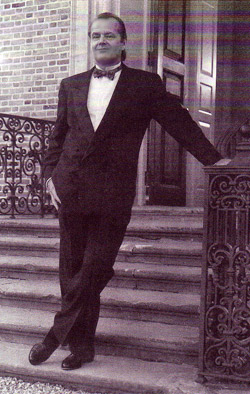 No one should think, though, that it is easy to work for Hollywood. Nino Cerruti himself once confided that movie productions were becoming increasingly demanding towards him while their gratitude was expressed with a name at the end of the film (which, of course, is no little matter either). Hollywood is like a Turkish market, he said, where one is expected to give 1000 per cent of oneself. Productions used to pay for the clothes made for the movies, but now they received only gratitude (in the final listings) in return for providing the clothes for free. The designer created the costumes for Robert Redford and Woody Harrelson in Indecent Proposal (1993). When the media asked him why he hadn’t done Demi Moore’s costumes, too, Cerruti answered that there were two reasons for that. First, that Demi Moore was a woman who knew what she wanted and that everyone is responsible for one’s bad taste. Second – that it was not obligatory for the woman in the film to wear Cerruti simply because the man was wearing a suit of that brand. To the best of his knowledge, he went on, Demi Moore had become friendly with Donna Karan so he hoped this would help her and instill good taste in her.
No one should think, though, that it is easy to work for Hollywood. Nino Cerruti himself once confided that movie productions were becoming increasingly demanding towards him while their gratitude was expressed with a name at the end of the film (which, of course, is no little matter either). Hollywood is like a Turkish market, he said, where one is expected to give 1000 per cent of oneself. Productions used to pay for the clothes made for the movies, but now they received only gratitude (in the final listings) in return for providing the clothes for free. The designer created the costumes for Robert Redford and Woody Harrelson in Indecent Proposal (1993). When the media asked him why he hadn’t done Demi Moore’s costumes, too, Cerruti answered that there were two reasons for that. First, that Demi Moore was a woman who knew what she wanted and that everyone is responsible for one’s bad taste. Second – that it was not obligatory for the woman in the film to wear Cerruti simply because the man was wearing a suit of that brand. To the best of his knowledge, he went on, Demi Moore had become friendly with Donna Karan so he hoped this would help her and instill good taste in her.
In his earlier movie costumes the designer provided the costumography for Catherine Deneuve, Liv Ullmann, Louis de Funès, Yves Montand and many others. It was exactly Cerruti who provided the costumes for Sharon Stone and Michael Douglas in Basic Instinct, including for the famous scene with the crossing of Stone’s legs; various costumes for Jack Nicholson and Michelle Pfeiffer in The Witches of Eastwick; the Yuppie style and business clothes of Michael Douglas in Wall Street, and others. Anthony Hopkins and Al Pacino have worn his tuxedos to the Oscar ceremony in Kodak Theatre. The designer himself was frank enough to admit the two leading motives in his work for cinema – artistic pleasure and financial interests. He dressed stars, he said, he dressed them well, from which he received artistic satisfaction and big money. It is exceptionally important to remember that none other but Nino Cerruti was the first designer who regularly began to create costumes for movie productions. Even in the course of several years he, in his own words, was the only one who did that. Later other designers like Giorgio Armani and Jean-Paul Gaultier turned to costumography.
GRANDCHILDREN OF THE GREAT RECONSTRUCT TECHNO-ROMANTICISM
The wide trousers, the ties and shirts of similar material, long jackets and soft coats – this is just a small portion of my impressions (raw and frank) from Cerruti’s review in Paris at the end of January 1995. Straight cut, roomy coats, double-breasted high buttoning and the trend of imposing hybrid shirt-cum-jackets (something also characteristic of other designers) can complement these impressions. The themes – Man is Casual Chic, Contrasts with a Mood, The World of Knitwear and Modern Classics – are sufficiently indicative to characterize the designer’s quests. The last theme, for example, corresponded to the idea of a new evolution of comfortable suits. The large lapels of the jackets and the wide trousers, the extended lines of men’s wear, the enormous pockets, the embossed textiles and the pleasant softness of tweed helped provide topicality to the classical style of clothing. Contrasts with a Mood, in turn, brought in mixed colours and unusual forms, the motley impression of a buzzing marketplace and red-yellow-orange shades. Without limiting itself or putting men’s fashion in strictly defined frames, Cerruti’s new collection showed development in the direction of variety, of the even more powerful invasion of the pragmatic and sports component, but also a high regard of the orthodox image of the representatives of the male sex. Nino Cerruti's review was a spectacle one can never forget. The hall dedicated to the world of fashion in rue de Paradis in Paris was literally bursting – journalists and fans, businessmen and intellectuals had come to show their respect for the maestro’s show. Claudia Cardinale and Roger Vadim, Roman Polanski and Suzy Menkes took the central seats next to the catwalk itself. Artistic highlife has long bowed before the art of Cerruti.
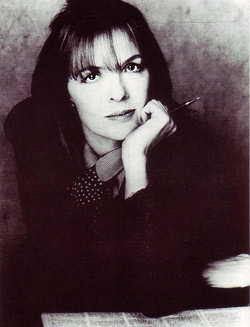 “Techno-romantics” was the leading theme of the January 1995 show in Paris. The black and blue tones dominated overclothes – long trench coats with trapezoid cut. Cinema was “present” through the launch of double-breasted jackets over wide trousers and straight, long jackets combined with “cigarette” trousers. High-tech chic was defended with nylon jackets and kabanas, decorated with metal-sheen leather. Blazers and coats, jacket trench coats, knitted military cut clothes and, of course, tuxedos – Cerruti’s eternal specialty – in three silhouettes – double-breasted jacket over wide trousers and a tux for women – a flaring jacket over cigarette pants, complemented the impression of the infinity of chic.
“Techno-romantics” was the leading theme of the January 1995 show in Paris. The black and blue tones dominated overclothes – long trench coats with trapezoid cut. Cinema was “present” through the launch of double-breasted jackets over wide trousers and straight, long jackets combined with “cigarette” trousers. High-tech chic was defended with nylon jackets and kabanas, decorated with metal-sheen leather. Blazers and coats, jacket trench coats, knitted military cut clothes and, of course, tuxedos – Cerruti’s eternal specialty – in three silhouettes – double-breasted jacket over wide trousers and a tux for women – a flaring jacket over cigarette pants, complemented the impression of the infinity of chic.
And to make the cinema-fashion connection even more full-blooded, Cerruti had cannily invited non-professional models to present his new ideas. Their list is truly head-spinning – Christian Vadim (son of Catherine Deneuve and Roger Vadim), Patrick O’Neal (son of Ryan O’Neal), Jean Verne (great-great-grandson of Jules Verne), Eric Clemenceau (the great-great-grandson of Georges Clemenceau and Sarah Bernhardt), Luke Flynn (the grandson of Errol Flynn), to mention but a few.
Nino Cerruti’s men’s collection revealed the designer's main concept of the image of the strong sex at the end of the 20th century: intelligence combined with the freedom of choice for recreation and leisure time; finesse combined with masculinity and the primeval. The cloth was mainly natural, dominated by wool, cashmere and cotton, with pastel tones dominating the colour scheme. Silhouettes were elongated, clean-cut to a maximum. The Cerruti 1881 shirts were of pure cotton and/or silk. The due to classical form was given as a whole and the ties were designed in harmony with the suits and accessories of men clothed by Nino Cerruti. A man who was not a slave of age limitations – businesslike and freethinking by nature. Cerruti 1881 is comfort, urban chic and techno-romanticism!
INTERVIEW WITH NINO CERRUTI
After the review of his men's autumn/winter 1995-1996 collection at Le monde des arts, rue de Paradis in Paris
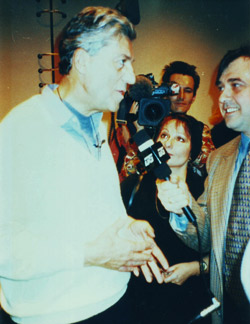 Lubomir Stoykov: What is the message you are sending men today with this collection?
Lubomir Stoykov: What is the message you are sending men today with this collection?
Cerruti: I think that when one is doing something new one should always enjoy it. Along with this, however, one should remain within the boundaries of good taste. I think this is precisely what I did with my new collection. Although I was afraid of a failure I now think I have done well.
Do you intend to discard this yellow pullover at some point or do you still wear it for luck? (I asked this question because at the end of the review Nino Cerruti came out to bow to the audience with a yellow pullover thrown on his shoulders)
I hope I will never discard it for then I would look very sad.
What are your plans for the future? What new ideas and collections should we expect from your infinite talent?
Fashion is a machine which amuses me on the one hand, but on the other I am its slave. The wheels keep on turning.
What would you say to Bulgarian designers?
Why only to Bulgarian designers? Before I wish them anything I would like to wish all Bulgarians to enjoy a better life, and as to designers – let them work, let them do their job well – that is what is expected of them.
* * *
Nino Cerruti invariably followed his aesthetic concept of women’s fashion, according to which clothes should not overrule women’s individuality in any case but solely have the task to underscore it. Should one take a closer look at the prêt-a-porter spring/summer collection for 1996 one would understand why Nino Cerruti created designs intended for city women. Modern times and their brilliance – that is what mainly inspired the designer in his choice of materials and proportions. Cerruti’s spring/summer designs for the gentle half of humankind were resolved mainly in three silhouettes – trapezoid, delicate circle cut and elongated. Clothes which with their functional forms and simplified line guaranteed comfort in everyday life.
Fabrics were always privileged by Nino Cerruti. The great designer not only kept to classical textiles characterized by their high quality, but also experimented with new materials – the result of the latest technological innovations. This collection was dominated by fabrics characteristic of the so-called “techno style” – double structure cloths, thick fabrics and leather which helped clarify designer form. It seems that Cerruti’s messages wanted to imply that “Elegant snobbism is in fashion again!” The desire to simplify and clarify the silhouette and cut was even more evident in the designer’s autumn/winter 1996-1997 collection for women. Nino Cerruti did not conceal his desire to dress contemporary women simply and at the same time elegantly. He is convinced that today's representatives of the gentle sex do not need the excessive in their look and are alien to the extremes, whims and caprice of fashion.
Clothes that remarkably harked of the men’s style, clean and gentle lines, extended and soft silhouette – these are some of the most characteristic features in the autumn/winter collection of Cerruti 1881. Feminine structure and masculine austerity is the peculiar antinomy in the work of the great Italian designer. The fabrics he preferred were closely woven and compact - mainly crepe, jersey, gabardine, as well as woolen cloths of the highest quality.
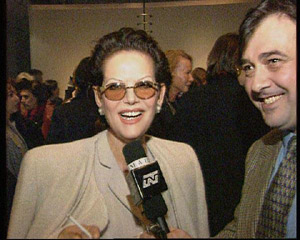 Nino Cerruti’s message was more than indicative: the uniqueness of this manner of dressing is due to the sense of balance – regardless of whether women are dressed in sporty clothes or for official occasions – in tuxedos. The union between feminine and masculine textures reveals self-confidence and elegance. The respect for the new technologies and innovations in textile and design in general, Cerruti demonstrated years ago in the men’s autumn/winter collection 1996-1997. Even the first designs showed the designer’s desire to dress the members of the strong sex in contemporary, high-tech and at the same time environment-friendly clothes. The formal was combined with the informal and youthful spirit dominated everything. The works – and generally this entire collection of Nino Cerruti – are an expression of the further development of his concept of masculine style on the threshold of the third millennium. A combination of modern and traditional, which doubtless was particularly appealing to young generations. Cerruti’s clothes for men are charged with self-confidence and nonchalance, freedom and an original sense of style. The cut is clean, the fabrics - state-of-the-art in textile innovation at which natural fabrics are combined with synthetic fibers. The special method of processing the cloth lends it additional freshness and finesse.
Nino Cerruti’s message was more than indicative: the uniqueness of this manner of dressing is due to the sense of balance – regardless of whether women are dressed in sporty clothes or for official occasions – in tuxedos. The union between feminine and masculine textures reveals self-confidence and elegance. The respect for the new technologies and innovations in textile and design in general, Cerruti demonstrated years ago in the men’s autumn/winter collection 1996-1997. Even the first designs showed the designer’s desire to dress the members of the strong sex in contemporary, high-tech and at the same time environment-friendly clothes. The formal was combined with the informal and youthful spirit dominated everything. The works – and generally this entire collection of Nino Cerruti – are an expression of the further development of his concept of masculine style on the threshold of the third millennium. A combination of modern and traditional, which doubtless was particularly appealing to young generations. Cerruti’s clothes for men are charged with self-confidence and nonchalance, freedom and an original sense of style. The cut is clean, the fabrics - state-of-the-art in textile innovation at which natural fabrics are combined with synthetic fibers. The special method of processing the cloth lends it additional freshness and finesse.
Nino Cerruti explained the casual chic in his implications with his desire to find and offer an alternative, informal look of contemporary men in an urban environment. Cerruti’s new silhouette not only exuded nonchalance and masculinity, it added yet another original line to the portrait of eternal elegance.
DESIGN AND BUSINESS: HAND IN HAND
Some authors try to oppose young Nino to the mature Cerruti. According to them, in his youth the designer was distinguished by his exceptionally creative spirit, avant-gardism and a penchant for constant experimentation and provocation through forms and cloth. At a more mature age, they claim, Cerruti gave himself up to fierce business and mainly applied marketing and advertisement techniques. One of the best experts on the designer, Richard Martin, does not agree with such an opposition. According to him, Nino Cerruti was both a designer and a businessman who showed great talent as well as a foresight controlling business. Martin called the artist a man of cloth: his menswear fabrics were textural, in pebbled and oatmeal grains, and so luxurious in their handling.
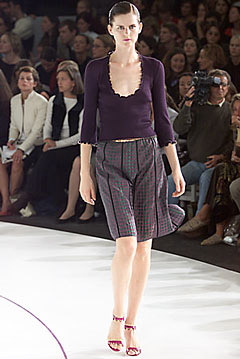
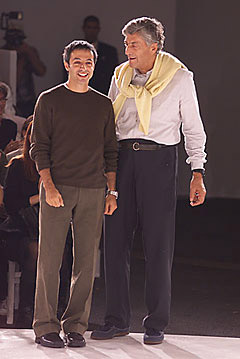
Geniuses of design can be distinguished by their predictions. They deserve ovations when they succeed to predict the development of style for years and even decades to come. Today we are all witnesses of the total use of everyday and casual clothes by people – rich and poor, educated and unenlightened, refined and simple. But it was none other than Nino Cerruti who nearly 20 years ago foresaw the future of menswear in L'Uomo Vogue "as a fashion that will be more refined and yet at the same time more everyday. In other words there will be a greater desire for authenticity and traditional simplicity which will not give the fashion existing until now a stinging box in the years."
Even at the beginning of his designer career Nino Cerruti was well aware how important it was to be familiar with production and the market, textile and new technologies. He also knew that the correct investment decision is a condition for success in the fashion industry and the fashion business. Before he appeared in public as a master of men’s wear he renovated the family industrial base and invested in two large factories in Milan. Years later he reflected on his method and technique of operation in the following manner: "I like to describe my operation as a modern version of the handcraft bodegas of centuries ago. It is important to know each link in the chain. I consider myself still very close to the theory of industrial design: using modern technology to reach the market. It's a very modern challenge: the continuous harmonization between the rational or scientific world and the emotional or artistic world."
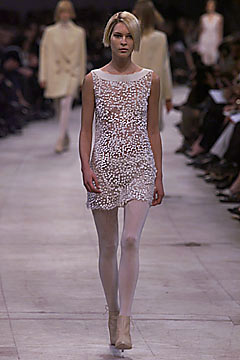
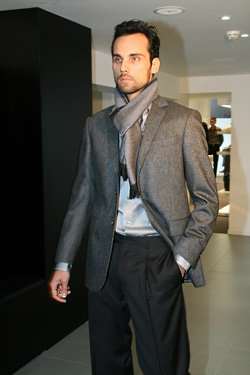
* * *
The art and manner of work of one of the world's kings of men's fashion Nino Cerruti is distinguished by modernity, an affinity to new technologies in textiles and ultra-high quality. Cerruti 1881 is a symbol of haute Hollywood fashion, a sign of technological garrulousness and techno-romantic elegance. The life and creative development of the famous designer are indicative of the fact that success in fashion is organically linked, on the one hand, with new technologies and use of textile innovations, and with the originality of advertisement and PR techniques, the consistent development of the star system and provision of clothes and accessories for celebrities in cinema - on the other. Thanks to masters like Nino Cerruti the world began to dress both more elegantly and more comfortably. As a true aesthetic prophet he predicted the onset of the era of unrestrained look and bringing style and fashion down to earth in real life.
References:
The following sources were used in this article: Еджинс, Т. Краят на модата. W studio, С., 2000; Ермилова, Д.Ю. История домов моды, “Академия”.Москва, 2003; О`Хара, Дж. Енциклопедия на модата. “Библиотека 48 “, С., 1995; Cerruti – History. In: www.cerruti.com ; Davis,Boyd. Cerruti: Laden With History. In: www.fashionwindows.com ; De grote Mode-Encyclopedie.Éditions - Nathan. Paris, France,1989; Martin, R. The St.James Fashion Encyclopedia:A Survey of Style from 1945 to the Present.Visible Ink Press. Detroit, 1997; Modezar Nino Cerruti im CINEMA-Interview, 1998. In: www.cinema.de; O`Hara,G.The Encyclopaedia of Fashion.From 1840 to the 1980s.Thames and Hudson. London,1986; Stegemeyer, A. Who`s Who in Fashion. Third edition. Capital Cities Media, Inc. Fairchild Publications, New York, 1996; Taylor, Michelle. Cerruti 1881 Fall 2004 - Milan Menswear Show Fall 2004. In: www.fashionwindows.com
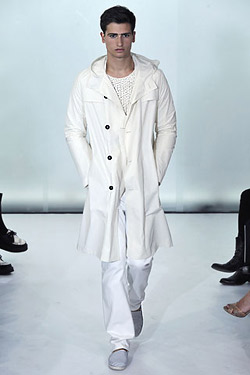
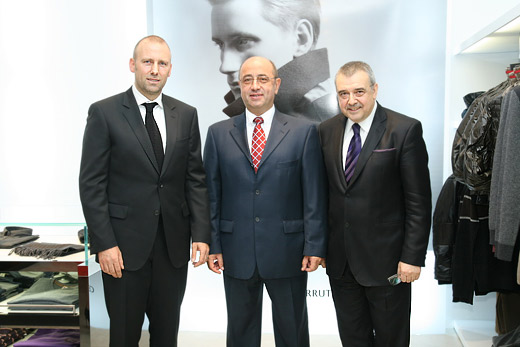
Photos:
1.Nino Cerruti.
Photo: © De grote Mode-Encyclopedie. Éditions - Nathan. Paris, France, 1989.
2. Faye Dunaway – a scene from Bonnie and Clyde film in a costume by Nino Cerruti, 1967.
Photo: © Seeling, Ch. Fashion, The century of the designers 1900 – 1999. Cologne, 2000.
Photo: © Fashion in Film. Edited by Regine and Peter W. Engelmeier. Prestel. Munich, 1990.
3. Collection of Nino Cerruti from the second half of 1980s.
Photo: © De grote Mode-Encyclopedie.Éditions - Nathan. Paris, France, 1989.
4. Jack Nicholson – a scene from The Witches from Eastweek film in a costume by Nino Cerruti and Aggie Guerard Rodgers, 1987.
Photo: © Fashion in Film. Edited by Regine and Peter W. Engelmeier. Prestel. Munich, 1990.
5. Diane Keaton – a scene from Baby Boom film in a costume by Nino Cerruti and Susan Becker, 1987.
Photo: © Fashion in Film. Edited by Regine and Peter W. Engelmeier. Prestel. Munich, 1990.
6. Lubomir Stoykov interviews Nino Cerruti in Paris, 1995.
Photo: © Personal archive of Lubomir Stoykov
7. Lubomir Stoykov interviews Claudia Cardinale at a fashion show of Nino Cerruti in Paris, 1995.
Photo: © Personal archive of Lubomir Stoykov
8. Collection of Peter Speliopolous for Cerruti, Spring-Summer 2000.
Photo: © JB Villareal/Shoot Digital / www.vogue.com
9. Peter Speliopolous together with Nino Cerruti at the Cerruti fashion show, Spring-Summer 2000.
Photo: © JB Villareal/Shoot Digital / www.vogue.com
10. and 11. Collection of Cerruti, Autumn-Winter 2001 – 2002.
Photo: © www.vogue.com
12. Collection of Jean-Paul Knott for Cerruti, Spring-Summer 2009.
Photo: © www.vogue.com
13. Collection of Jean-Paul Knott for Cerruti, Autumn-Winter 2009 – 2010.
Photo: © Marcio Madeira / www.vogue.com
Translator: Reny Ivanova
Read: 10786 times © Fashion Lifestyle Magazine, issue 28, November 2009
MORE PUBLICATIONS:ISSUE 27: Gianfranco ferre: “I am designer even in my soul”
ISSUE 26: ELSA SCHIAPARELLI - aesthetics of eccentricity
ISSUE 25: EMILIO PUCCI: the lord of bright colours
ISSUE 24: Alberta Ferretti: romanticism and luxury, femininity and sex appeal
ISSUE 23: SALVATORE FERRAGAMO: the shoemaker of the stars





